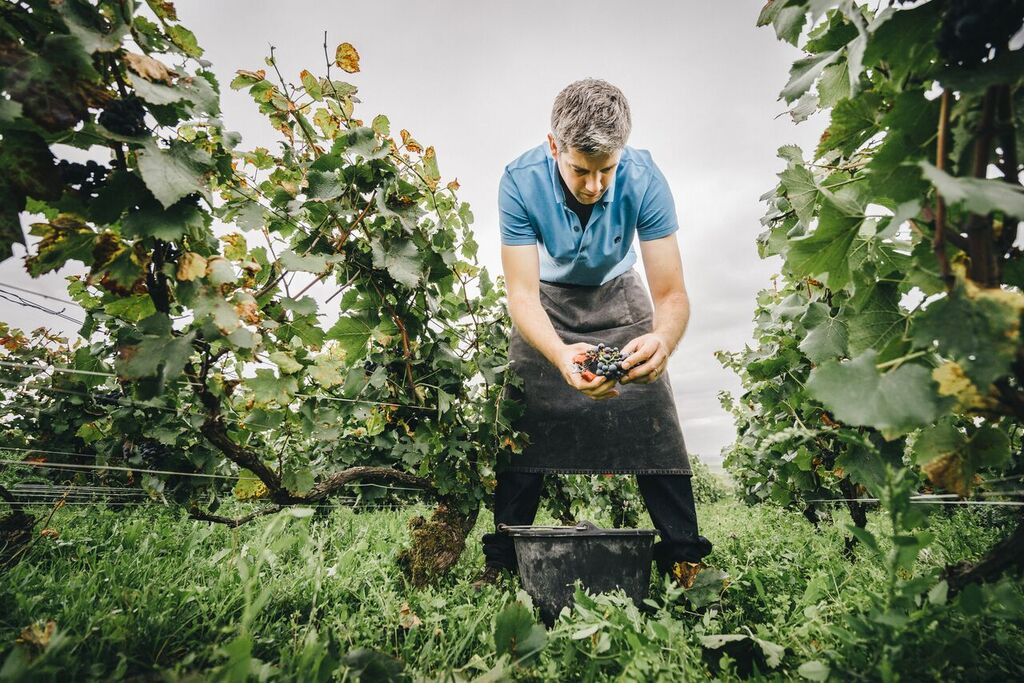For the Love of the Vineyard: Champagne Pierre Paillard
Quentin Paillard cares about his vines. His family has been growing grapes and making wine in the village of Bouzy since 1799—so it’s fair to say that he’s deeply rooted (pun intended!) in its soil. But upon speaking to him, it’s clear that their soil and their vines are truly the driving force behind the domaine. His passion for the work they do in the vineyards is palpable, and this is indeed the unique advantage of being a grower-producer among Champagne’s many negociants. Quentin and his brother, Antoine, farm their 11 grand cru hectares organically and biodynamically, although they are not certified and not seeking to be; they consider this work an investment in the immune system of the vines. All their wines are made from this devotedly grown estate fruit, with a heavy emphasis on preserving the character of the vintage, even in their nonvintage offerings. And there’s some alchemy that happens between soil and fruit and year that makes these Pinot-driven wines perennial staff favorites here at K&L.
The brothers took over the domaine in 2008. Their father is now retired, but the focus on quality they learned from him is still paramount. They are extremely particular about vine material, using only hand-selected massal cuttings from an old family vineyard (50-60 years old) or a special clone from Burgundy called Pinot Fin for more aromatic concentration. This is important because much of Champagne was replanted to high-yielding clones in the early eighties, many of which now need to be ripped out. As a product of the negociant system, many growers have historically had incentive to favor quantity. According to Quentin: “The economy in Champagne is such that 90 percent of land is owned by farmers selling to negociants, not making their own wine. Their main goal is to meet the allowance, and they overproduce to be safe in case of hail or rot.” But this is not always the best choice for the long-term health of the vineyard. I’d imagine that this longer, more holistic perspective is one earned when your family has been working with vines for eight generations, as Quentin’s has. And, as they aren’t selling their grapes, quality becomes the driver of all their decision making.
Part and parcel of that approach is plowing the soil and not using herbicides. “My father’s vineyards have never seen herbicides,” says Quentin. Plowing disrupts the root system and makes it dig deep for nutrients instead of fanning out horizontally. "The roots that stay in the top soil can’t pull minerals from the chalk below, so they will be more fatty, with less acidity. Same thing when you irrigate. When the roots are not going deep you cannot express the terroir. You have pure chalk under the clay in Bouzy. Sometimes Bouzy is seen as a place that can grow Pinot very rich, very ripe. But we can also get the bright acidity if the Pinot goes down to the chalk.”
The Paillards use organic compost and tea preparations to preserve the health of the soil so that the grapes are not as dependent on the growers, but on their own immune system. The soil is naturally balanced, and nutrients go to the grapes. They prioritize picking ripe, and Quentin says this translates to the glass. “When you taste some entry level negociant wines, you can get that bready, yeasty quality with no vintage variation. And that’s because the fruit is underripe. So the fruit gets overshadowed by winemaking choices.” Picking the fruit at perfect ripeness, minimal intervention in cellar, using native yeasts—all of their actions are about stepping back and letting their material do its thing. Since 2014, they’ve only fermented in stainless steel and oak. “The way that we’re making wine is to make the best possible still wine that then becomes Champagne.”
I love Paillard’s grower-producer point of view. Blending is indeed an artform, but to be able to raise your fruit from ancestral vineyard material, nurture it to be its best, and preserve as much about the nature of the year’s produce as possible--it’s an expression of terroir that can sometimes be elusive in Champagne. And it translates into an excellent glass of wine.
An excellent introduction to this producer is their "Les Parcelles," as it is a good representation of the estate, and of what Bouzy tastes like. It provides a snapshot of their vineyards, with two-thirds Pinot and one-third Chardonnay. Because they pick the fruit when it is ideally ripe, they don’t need to add sugar. Look on the label and you’ll find a Roman numeral that represents the vintage that comprises 80-90 percent of the wine. In Champagne, it is forbidden to only make vintage wines, yet Quentin loves the expression of a vintage, so prioritizes using wine from mostly one vintage per cuvee.
- Kate Soto







